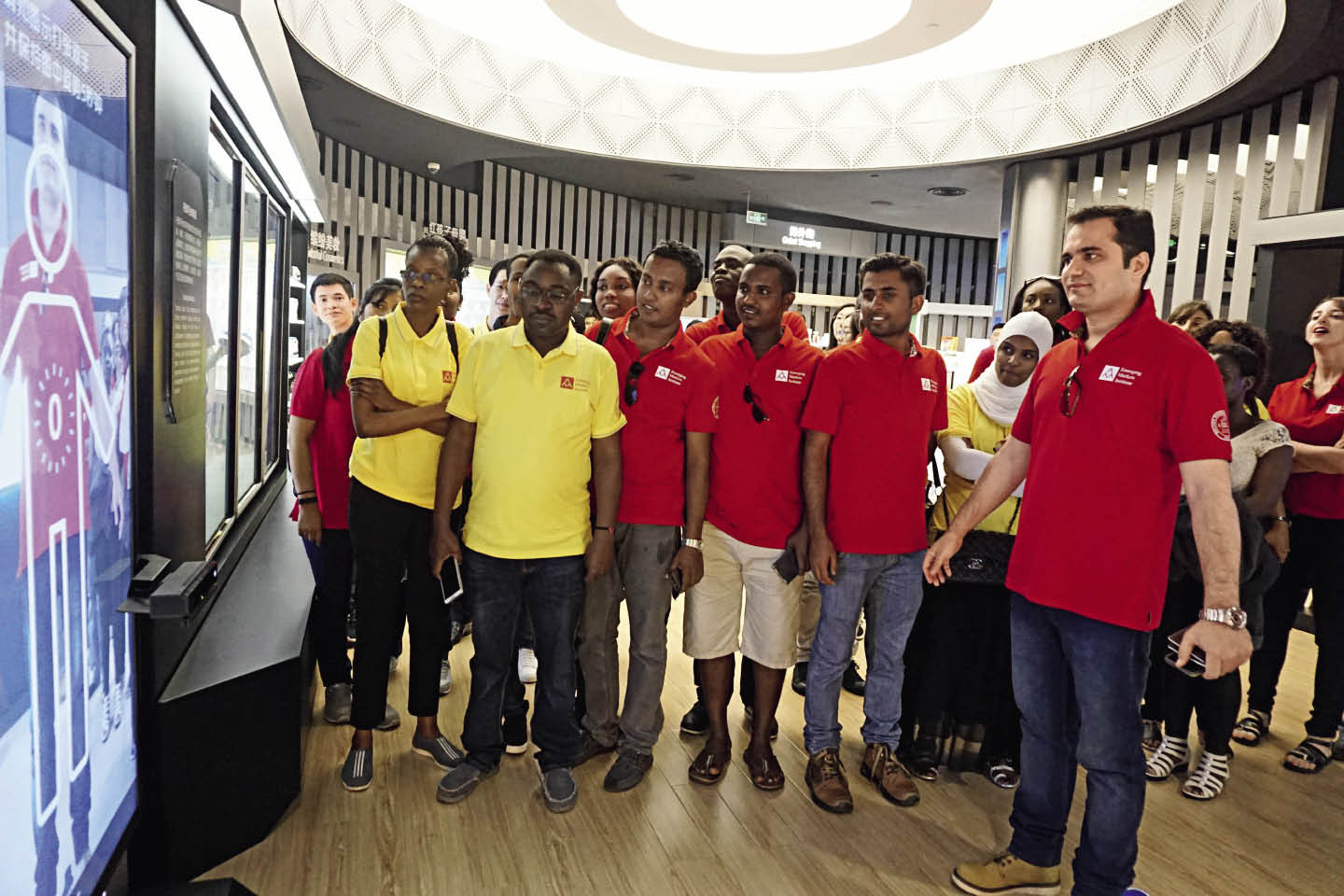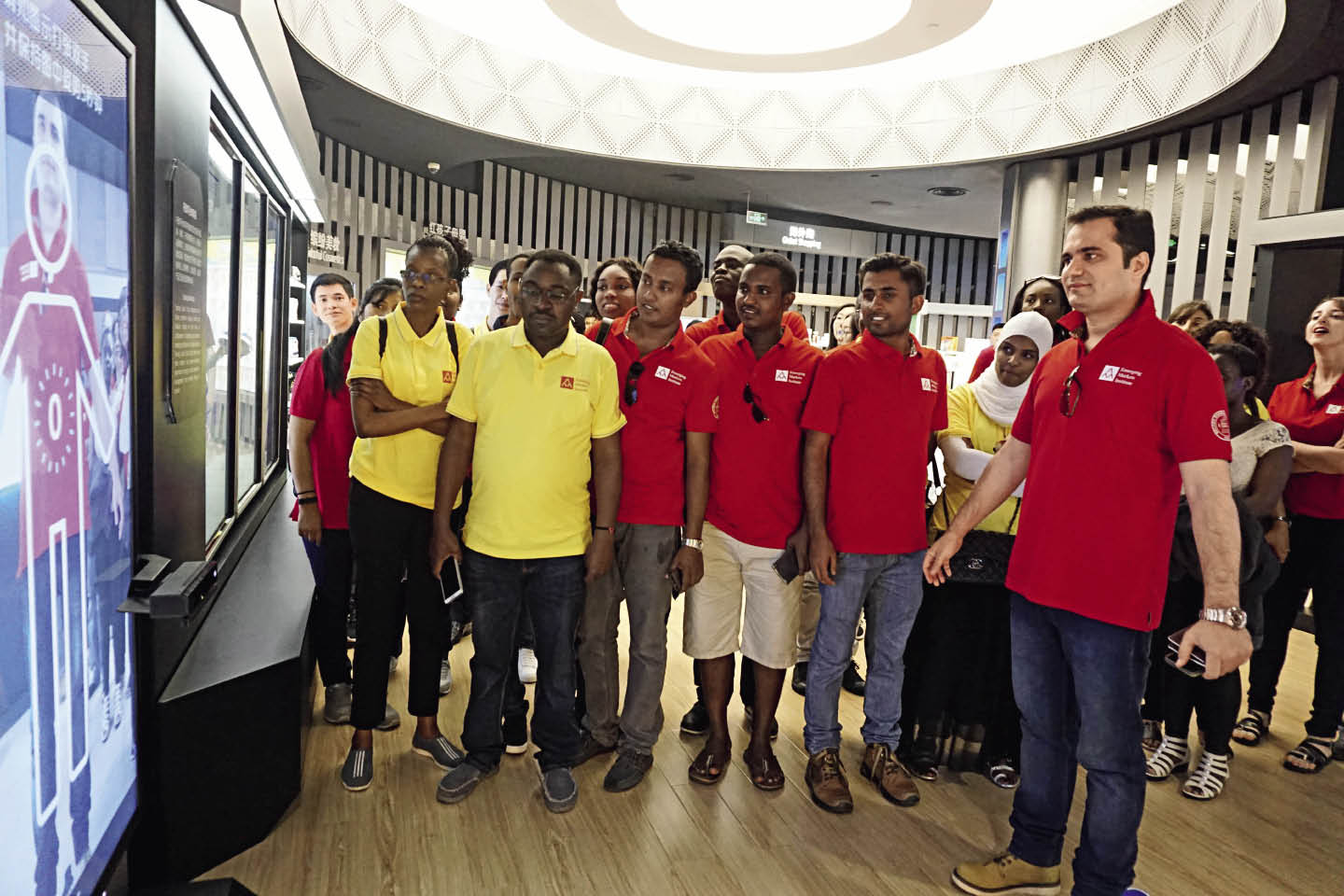Nanjing: Building an innovation-driven city
China Today, September 6, 2016 Adjust font size:
As innovation brings vitality to the world economy, Chinese cities have constantly explored their innovative development mode.
“Jiangsu’s economy always ranks high among China’s provinces, while its capital city Nanjing is the best within the province!” Hu Biliang, a professor of economics and dean of the Emerging Markets Institute of Beijing Normal University, remarked after a business trip to nations along the Silk Road Economic Belt.
Developing Featured Industries
Nanjing, ancient capital of six dynasties in China’s history, is now the economic center of the Yangtze River Delta, and a vital port city in East China’s Jiangsu Province. In 1960, the renowned Nanjing Yangtze River Bridge was listed in The Guinness Book of World Records as the longest bridge with both a highway and railroad in the world.

A foreign student views himself in try-on items through virtual fitting software at Suning headquarters in Nanjing.
“Entrepreneurship and innovation” are nowadays familiar words among Nanjing citizens since the Nanjing Development Zone (aka. Nanjing Economic and Technological Development Zone) embarked on its pioneering journey in 1992.
Shen Yinlong, vice director of the development zone’s management committee, summarized the experience over the past two decades, “Innovation based on sheer acknowledgement of our own resource endowment is important for setting up a farsighted development approach.”
After careful analysis of its advantages, Nanjing Development Zone is now focusing on four leading industries: photoelectric display, biomedicine, high-end equipment, and modern service industries. It has established clusters of technology centers, R&D centers, sales centers, and logistics centers and headquarters. As a result, over 3,500 enterprises from more than 60 countries and regions worldwide have settled there to share their innovative resources.
More than 70 enterprises from the photoelectric display sector in the zone, such as China Electronic Corporation, LG and Sharp, are evolving into an industry cluster worth RMB 300 billion. Nanjing Liquid Crystal Valley, with an area of 18 sq-km, boasts an ever-increasing productivity of sixth-generation LCD panels as its leading project. The world’s first line of 8.5th generation of metal-oxide crystal panels has already gone into production, supplemented by a number of supporting projects, including glass substrate, color filter, liquid crystal material and optical film. This contributes to a solid foundation for a photoelectric display industry base with a leading position in China and a first-class role in the world.
Meanwhile, the Life Science & Pharmaceutical Industrial Park, covering an area of 12 sq-km, has made a grand entrance in a planned region to leverage development opportunities for China’s life science industry. The output value yielded by more than 30 famous biomedical enterprises, including Jinling Pharmaceutical Co., Ltd., Chia Tai Tianqing Pharmaceutical Group Co., Ltd., Nanjing Sanhome Pharmaceutical Co., Ltd., and C&O Pharmaceutical Technology, accounts for two thirds of the total output of Nanjing’s pharmaceutical sector.
“Internationalization is a global trend that innovation-driven Nanjing would never overlook.” Shen Yinlong spoke of how more than 40 high-end equipment manufacturing enterprises from Germany, Sweden, and Japan have grasped the great opportunity presented by the “Made in China 2025” plan and eyed China’s booming market in new energy vehicles. In response, the development zone introduced the new energy automobile battery project invested by LG Chemical with globally leading technologies in the sum of US $3.5 billion. This in turn has attracted a large number of companies dealing in new energy automobiles as well as relevant spare parts to the zone, making the area a trailblazer of the new energy automobile industry in China.
“We are speeding up infrastructure construction, and at the same time enhancing governmental efficiency,” Shen Yinlong told the reporter. “In Nanjing Development Zone, well thought-out details beyond your expectations and overwhelming sincerity are always placed at the center of everything we do.”
Qualified services have helped Nanjing attract investors worldwide. Almost 100 modern logistics and trade enterprises – from Singapore, the U.K., Italy and other countries – have set up and operate subsidiaries here. This greatly boosts the modern service industry in the city, enabling it to compete on the global stage. Nanjing Integrated Free Trade Zone, with a planned area of 3.83 sq-km, provides powerful support for the economic development of Nanjing and the Yangtze River Economic Belt on the whole, in particular the region’s strategic emerging industries. It has established six centers for logistics, trade fairs, R&D, etc., and 10 platforms including imported wine, food, and mechanical products, all of which are stimulating the transnational e-commerce trade of newly developing businesses.

